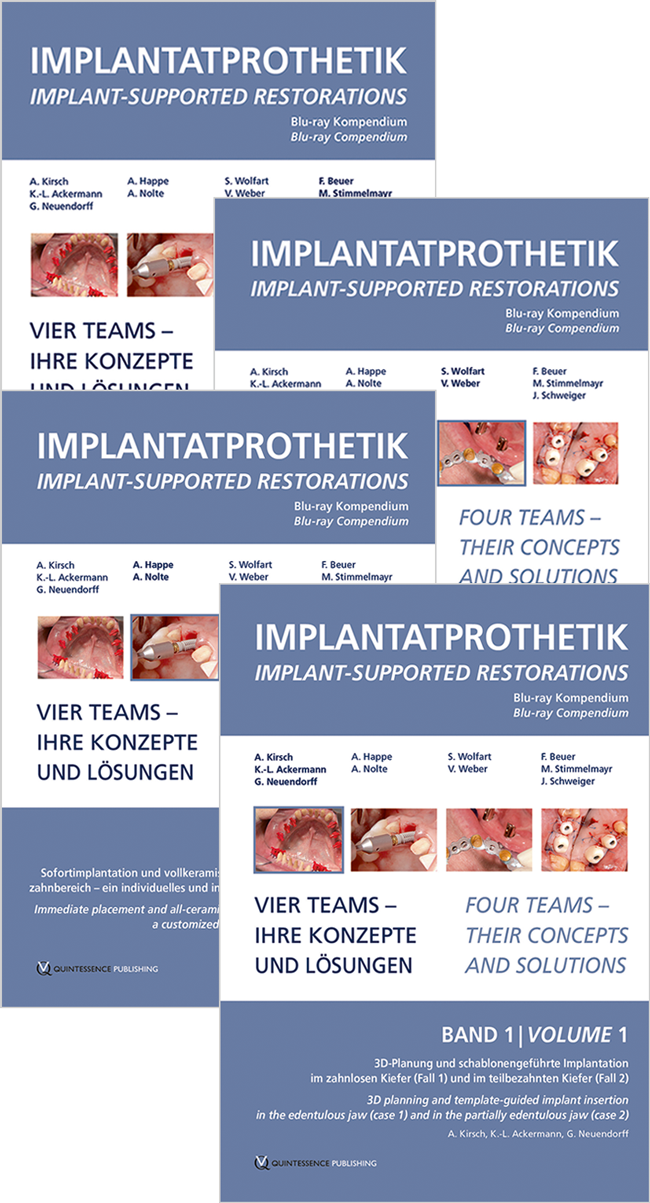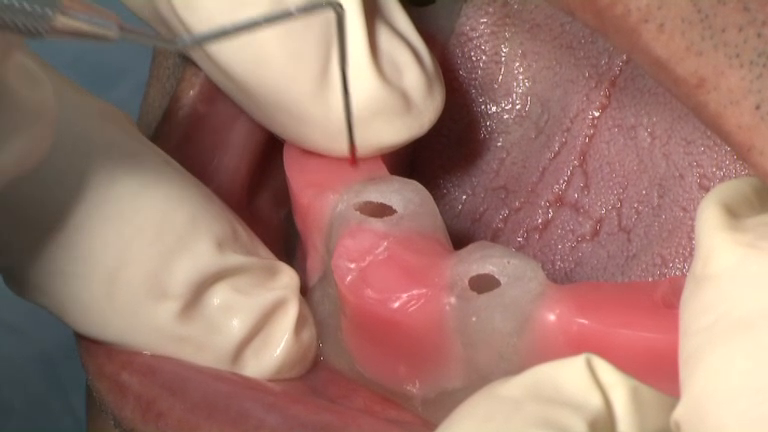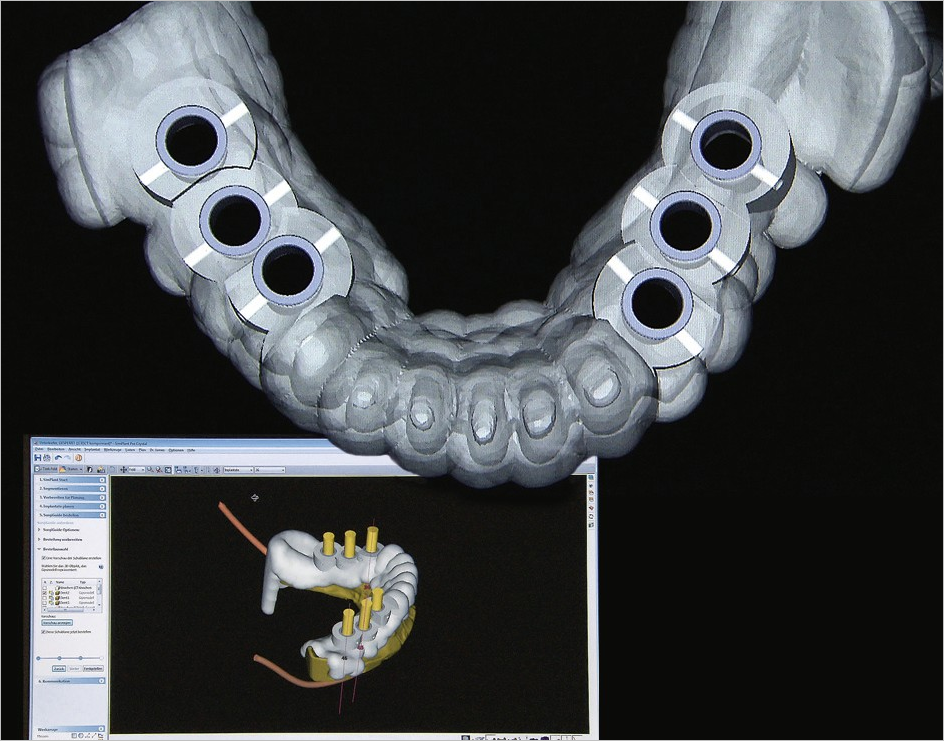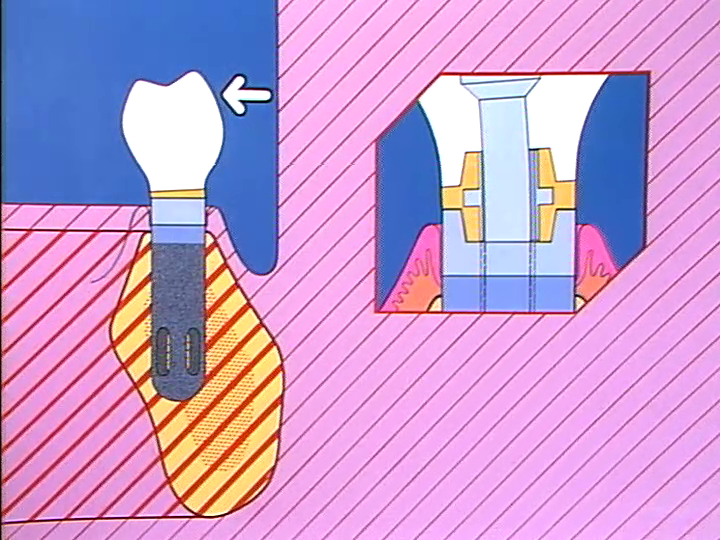The International Journal of Oral & Maxillofacial Implants, 2/2000
Seiten: 209-218, Sprache: EnglischWatanabe, Fumihiko / Uno, Ichiyo / Hata, Yoshiaki / Neuendorff, Gerhard / Kirsch, AxelFour types of implant superstructures were screwed onto implant bodies, and the strains created around the implant bodies were compared and analyzed within the IMZ Implant System. Three IMZ implants were embedded in the center of a polyurethane block (30 x 40 x 30 mm), and a total of 16 superstructures was fabricated by 4 methods: 1-piece cast, 1-piece cast/split soldering, soldering, and passive fit. Six strain gauges were placed on the surface of the block 1 mm apart. Three embedded implants were numbered, and a fixed partial denture was placed on these implants and screwed by a torque wrench using 14.5 Ncm torque. This procedure was repeated 7 times for each fixed partial denture, and each created strain was measured when the last screw was tightened. In all fixed partial dentures, strains were produced around the implant bodies when screws retaining the prosthesis were tightened, and the strain was relieved with unscrewing. The magnitude of strain was greater with the 1-piece cast method or the section/solder method than with the soldering and passive-fit methods. Of the 2 soldering methods, when the screw on the middle implant was tightened before those on the terminal 2 implants, the magnitude of strain was lower with the soldering method than with the 1-piece cast/split soldering method. When the order of screw tightening was changed, there were significant differences in the magnitude of strain at each gauge with the soldering method. With the passive-fit method, no differences in the magnitude of strain attributable to the order of screw tightening could be detected. The magnitude of strain produced around a screw-retained implant prosthesis was significantly lower with the passive-fit method when compared to the other 3 fabricating methods. Furthermore, the implants prepared by the passive-fit method were not affected by the order of screw tightening.
Schlagwörter: implant prosthesis, passive fit, strain gauge, stress distribution, tightening screw
The International Journal of Oral & Maxillofacial Implants, 6/1999
Seiten: 819-823, Sprache: EnglischFugazzotto, Paul A. / Kirsch, Axel / Ackermann, Karl-Ludwig / Neuendorff, GerhardNumerous problems have been reported following various therapies used to attach natural teeth to implants beneath a fixed prosthesis. This study documents the results of 843 consecutive patients treated with 1,206 natural tooth/implant-supported prostheses utilizing 3,096 screw-fixed attachments. After 3 to 14 years in function, only 9 intrusion problems were noted. All problems were associated with fractured or lost screws. This report demonstrates the efficacy of such a treatment approach when a natural tooth/implant-supported fixed prosthesis is contemplated.
Schlagwörter: implant-tooth support, intrusion, screw-fixed attachments
Quintessenz Zahnmedizin, 10/1999
Oralchirurgie / Orale MedizinSprache: DeutschKirsch, Axel / Neuendorff, Gerhard / Ackermann, Karl L. / Nagel, Rainer / Dürr, WalterZiel der Neuentwicklung des Camlog-Systems war es, basierend auf 25 Jahren implantatprothetischer Erfahrung die bekannten designbedingten mechanischen Probleme, die Unzulänglichkeiten in der Handhabung sowie die ästhetischen und funktionellen Einschränkungen der derzeit auf dem Markt befindlichen Systeme zu überwinden. Die kritische Auseinandersetzung mit eigenen und alieno loco gemachten Erfahrungen haben ab 1995 zur Entwicklung einer neuen Hardware-Generation geführt, deren Herzstück eine innovative Implantataufbauverbindung ist. Die biomechanische Grundkonzeption der Camlog- Aufbauverbindung gestattet erstmals sicher und zuverlässig die Möglichkeit der Zahn-für-Zahn-Restauration auch im Seitenzahnbereich des Ober- und Unterkiefers mit einer vorhersehbaren Langzeitprognose. Die nach apikal abgestufte röhrenförmige Extension der Implantataufbauten erlaubt quasi blind eine einfache und schnelle Orientierung in die Längsachse des Implantates: Nach einer leichten Rotationsbewegung rastet der Aufbau sichtbar und spürbar in seine Endposition ein. Das Tube-in-tube-Design der Camlog-Verbindung ist mechanisch sehr stabil und absolut (0°) rotationsgesichert. Die Konstruktionsmerkmale der Camlog-Verbindung führen zu annähernd 100 % höheren Werten bei dem statischen Festigkeitstest und zu über 60 % höheren Werten im Dauerwechselbelastungstest gegenüber den von der FDA geforderten Mindestwerten. Das Camlog-System sowie seine Komponenten werden beschrieben, die klinische Anwendung für verschiedene Indikationen wird anhand von vier Fallbeispielen demonstriert, und erste Ergebnisse einer prospektiven Studie zu Knochenabbaurate, Erfolgsquote und Komplikationsrate nach 3jähriger Beobachtungszeit von 1.764 Implantaten werden vorgestellt.
Schlagwörter: Einzelkronenrestauration, Implantataufbauverbindung, Implantatästhetik, Knochenabbaurate









